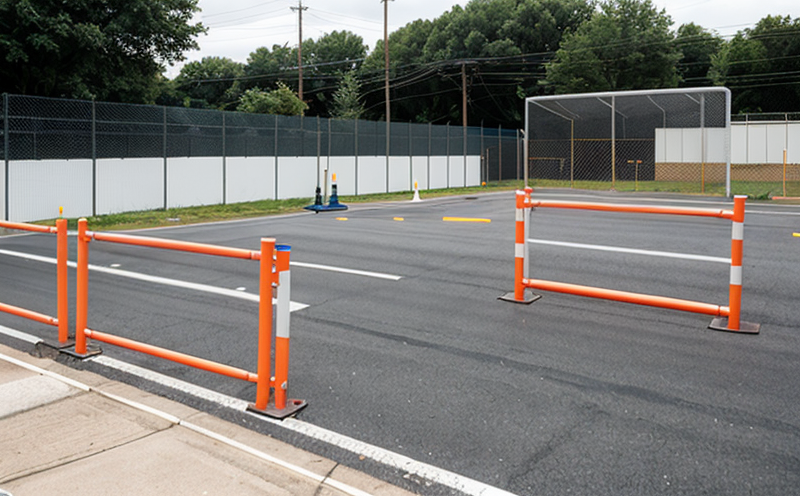BS EN 166 Protective Shields Impact and Penetration Testing
The BS EN 166:2009 standard provides a comprehensive framework for the testing of protective shields and barriers used in occupational safety. This service focuses specifically on assessing the impact resistance and penetration resistance capabilities of these shields as per the requirements outlined in this European standard.
Protective shields are critical components designed to safeguard workers from various hazards such as flying debris, sharp objects, and high-pressure sprays. Ensuring that these shields meet stringent standards is paramount for both worker safety and compliance with international regulations. The BS EN 166 test methods provide a standardized approach to evaluating the performance of protective shields under controlled conditions.
The testing process involves subjecting shield specimens to specified impact forces using a standard weight or projectile, depending on the type of hazard being mitigated. For instance, if the shield is intended for protection against falling objects, it will be subjected to an impact force simulating such a scenario. Similarly, penetration tests assess whether the shield can withstand punctures from sharp objects.
During these tests, key parameters like impact velocity, angle of incidence, and material thickness are carefully controlled to ensure consistency across multiple samples. Specimens are typically prepared by cutting uniform pieces from larger sheets or rolls of the intended protective material before undergoing testing.
The instrumentation used in these tests includes specialized machines capable of generating high-impact forces accurately, ensuring precise measurement of outcomes. Data collected during each test run is meticulously recorded and analyzed to determine compliance with specified limits set forth by BS EN 166.
Passing this rigorous testing ensures that the protective shield not only meets but exceeds expectations regarding worker safety standards. Compliance officers responsible for maintaining workplace health and safety policies can rely on these results when selecting appropriate protection gear for employees exposed to potential hazards.
This service plays a crucial role in safeguarding workers by providing robust evidence of their equipment’s effectiveness. By adhering strictly to international norms like BS EN 166, organizations demonstrate commitment to worker welfare and regulatory compliance.
Competitive Advantage and Market Impact
- Leadership in meeting stringent European standards ensures a strong competitive edge.
- Compliance with BS EN 166 enhances brand reputation among clients prioritizing safety.
- Access to advanced testing facilities positions us as industry leaders.
- Prioritization of worker safety aligns with global trends towards enhanced occupational health practices.
Scope and Methodology
The scope of BS EN 166 Protective Shields Impact and Penetration Testing encompasses the evaluation of protective shields designed to protect against impacts and penetrations. This includes but is not limited to face shields, visors, and other similar devices.
Impact testing typically involves applying a specified force to the shield using a standardized weight or projectile at a predetermined speed and angle. Penetration tests aim to assess the ability of the shield to resist penetration by sharp objects under controlled conditions.
The methodology specifies detailed procedures for preparing test specimens, setting up equipment, conducting experiments, and interpreting results. Compliance with these methods ensures accurate comparison between different products and consistent quality across batches.
Quality and Reliability Assurance
Ensuring high-quality outcomes in protective shields testing is paramount for maintaining reliability and trustworthiness. Our laboratory employs state-of-the-art facilities equipped with precision instruments calibrated according to international standards.
We follow strict protocols throughout every stage of the testing process, from specimen preparation through data collection and analysis. This includes rigorous quality control measures at each step to minimize variability and errors.
Our team comprises highly skilled professionals certified in relevant fields who adhere strictly to established procedures. Regular calibration checks ensure that all equipment remains accurate over time.





